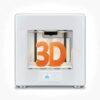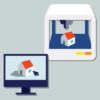3D Printing Consumables Market Summary:
The 3D printing consumables market is experiencing significant growth and is expected to continue expanding in the coming years. As the demand for 3D printing technology increases across various industries, the need for consumables such as filaments, powders, and resins is also on the rise. One of the key drivers of this market is the growing adoption of 3D printing in the manufacturing sector. With the ability to create complex and customized products, 3D printing is revolutionizing the way goods are produced. This has led to an increased demand for consumables that are compatible with different types of 3D printers. Another factor contributing to the growth of the 3D printing consumables market is the continuous advancements in materials used for printing. Manufacturers are constantly developing new and improved filaments, powders, and resins that offer enhanced properties such as strength, flexibility, and heat resistance. This has opened up new possibilities for 3D printing applications in industries like aerospace, automotive, healthcare, and consumer goods.
Moreover, the affordability of 3D printers has also played a significant role in driving the demand for consumables. As the cost of 3D printers decreases, more individuals and small businesses are able to invest in this technology. This, in turn, increases the demand for consumables as more people start experimenting and creating with 3D printing. The 3D printing consumables market is poised for significant expansion as the adoption of 3D printing technology continues to rise. With ongoing advancements in materials and increasing affordability, the demand for consumables is expected to soar across various industries, making it a lucrative market for manufacturers and suppliers.
3D Printing Consumables Market Overview:
The 3D Printing Consumables Market overview provides a comprehensive understanding of the analyzed market. It includes an introduction to the market, its size, growth rate, and key trends. This aims to give clients a broad understanding of the market landscape. The market analysis of the 3D Printing Consumables Market delves deeper into the market dynamics, focusing on factors such as market drivers, challenges, and opportunities. It explores the macroeconomic and microeconomic factors affecting the market, industry regulations, and emerging market trends. The analysis provides valuable insights into the current and future market conditions.
The assessment of the 3D Printing Consumables Market is performed by taking various factors into consideration, like, for instance, the business expansion policies of key players, competitive analysis of the progress of new entrants and emerging players, and the revenue, financial, and opportunity analysis of market players. The also analyzed based on regional segmentation, type or technique, end-user spectrum, etc. This research implements the latest methodologies to help clients understand the overall market scenario and strategize accordingly. The 3D Printing Consumables Market report provides an overview of the different types of analysis conducted during the market research process, including but not limited to SWOT analysis, Porter's Five Forces analysis, PESTLE analysis, and market forecasting. These analyses provide a deeper understanding of the market dynamics and assist in making informed business decisions.
Major players included in the 3D Printing Consumables Market:
- 3D Systems, Inc.
- Arcam AB
- Concept Laser GmbH
- EOS GmbH
- ExOne GmbH
- Solidscape Inc.
- Optomec
- SLM Solutions GmbH
- Stratasys Ltd.
- Voxeljet AG
- Stratasys Ltd.
- PostProcess Technologies
- ExOne
- GoPrint3D
- 3M
3D Printing Consumables Market Segmentation:
By Technology
- Stereolithography (SLA)
- Digital Light Processing (DLP)
- Fused deposition modelling (FDM)
- Selective Laser Sintering (SLS)
- Selective laser melting (SLM)
- Electronic Beam Melting (EBM)
- Laminated object manufacturing (LOM)
By Consumable Type
- Printing Materials
- Ceramics
- Plastics
- Metals
- Others
- Post Processing
- Surface finish Sandpapers
- Cold Welding Consumables
- Solvents, Resins and Binders (For Dipping, Coating Process, etc.)
- Polishing Paper & Compounds
- Primers and Paints
- Others (Mineral Oil, Adhesives, etc.)
By Sales Channel
- Offline Sales
- Online Sales
By End-Use Application
- Industrial
- Aerospace and Defense
- Medical & Healthcare
- Electronics & Consumer Products
- Education
- Automotive
- Others (Food & Beverage, construction, etc.)
Future Market Analytics Focus Points:
- SWOT Analysis
- Key Market Trends
- Key Data -Points Affecting Market Growth
- Revenue and Forecast Analysis
- Growth Opportunities For New Entrants and Emerging Players
- Key Player and Market Growth Matrix
3D Printing Consumables Market Competitive Analysis:
The competitive analysis of the 3D Printing Consumables Market assesses the competitive landscape of the market. It includes evaluating key players in the industry, their market share, business strategies, and competitive advantages. The competitive analysis also highlights the strengths and weaknesses of major competitors, allowing clients to understand the competitive positioning of companies operating in the market.
Objectives of the Study:
- To provide a comprehensive analysis on the 3D Printing Consumables Market by segmentation and by region
- To cater extensive insights on factors influencing the market growth (drivers, restraints, industry-specific restraints, business expansion opportunities)
- To anticipate and analyse the market size expansion in key regions- North America, Europe, Asia Pacific, Latin America and Middle East and Africa
- To record and evaluate competitive landscape mapping- strategic alliances and mergers, technological advancements and product launches, revenue and financial analysis of key market players
How our market research reports help clients:
Our market research reports provide valuable insights to clients in their decision-making process and support their growth and market capture efforts. They offer:
- Comprehensive understanding of market trends, dynamics, and growth potential.
- Identification of niche markets and emerging opportunities.
- Assessment of competitive landscape and strategic benchmarking.
- Insights into consumer preferences, buying behavior, and market demand.
- Risk assessment and mitigation strategies.
- Market forecasting and trend analysis for informed business planning.
- Understanding product development, pricing, and other strategies.
In case of any specific requirements or changes to the current table of content based on your scope, please contact us at: enquiry@futuremarketanalytics.com






















